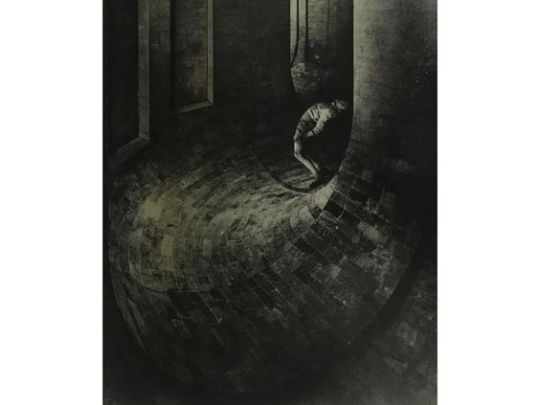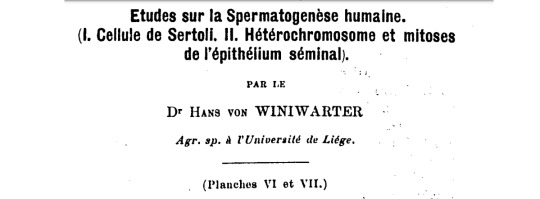#hagenbach
Explore tagged Tumblr posts
Text

Sophie Taeuber-Arp, Composition, c. 1918, graphite and body colors on paper, Kunst Museum Winterthur, Donated by Marguerite Arp-Hagenbach, 1977. © SIK-ISEA, Zürich (Jean-Pierre Kuhn). © 2023 Stiftun Arp e.V., Berlin / Rolandswerth / Artists Rights Society (ARS), New York
121 notes
·
View notes
Text
Egy gamer streamer Temu termékekkel építette fel „millió dolláros” stúdióját költséghatékonyan
A 27 éves DJ, online streamer és tartalomkészítő, Natasa Hagenbach (@natessia_), aki Dániában él, sosem gondolta volna, hogy a Temu termékei segítenek majd kibontakoztatni a szenvedélyeit és magasabb szintre emelik élő közvetítéseit. Natasa 15 évesen kezdett DJ-zni, mély elektronikus zenei szenvedélye vezette erre az útra. Azonban 2020-ban, a pandémia idején, amikor az összes klub bezárt,…
2 notes
·
View notes
Text
LSD SPIRITUAL ENLIGHTMENT
BUY LSD TABS ONLINE NOW, The belief that in madness there may exist a core of numinous knowledge is a commonplace in all human societies. In the Western tradition, the doctrine that truth may be obtained through a state of mind in which reason is dislocated, a state of ecstatic revelation, is generally supposed to have originated with the Thracian worship of Dionysius, later becoming synthesized by Pythagorus, and to have received its most complete elaboration in the dialogues of Plato.
The class of drugs of which LSD-25 is the most potent member may prove for our time to be a very useful tool in exploring, via the scientific method, the roots of this age-old dilemma concerning the nature of perceived reality.
“A major contribution to ensuring the continued expansion of the renaissance in psychedelic research. This book would be an outstanding textbook in all courses of psychedelic psychotherapy, mysticism, and spirituality.” — Rick Doblin, Ph.D., founder and executive director of the Multidisciplinary Association for Psychede
“An all-star lineup of psychedelic cognoscenti.” — Julie Holland, M.D., editor of The Pot Book and author of Weekends at Bellevue
“A powerful testimony from pioneers of consciousness research, spiritual teachers, and scholars about the potential of psychedelic plants and their compounds to bring spirituality to modern society and help alleviate the dangerous alienation that has brought humanity to the brink of destruction.” — Stanislav Grof, M.D., author of LSD Psychotherapy, Psychology of the Future, and When the Impossible
“A useful reference work that presents the current state of understanding from the relevant scientific, practical, and judicial perspectives.” — Dennis McKenna, Ph.D., founding board member of the Heffter Research Institute and coauthor of The I
“Explains all aspects of the psychedelic experience as a tool for spiritual evolution--from personal accounts to detailed information and practical instructions. A key book.” — Dieter Hagenbach, president of Gaia Media Foundation
“Essential reading for people interested in humanity’s efforts to experience the divine. This is an outstanding collection of essays and studies on mystical experience.” — Michael Nielsen, professor and chair of psychology, Georgia Southern University
“A tour de force of the history of the Western reencounter with these perennial sacred plants, written by leading figures from many disciplines. The broad coverage exemplifies the importance of psychedelic plants for many disciplines and their diverse potentials for personal and social transformation.” — Michael Winkelman, Ph.D., author of Shamanism: A Biopsychosocial Paradigm of Consciousness and Heali
“This essential collection forces a reexamination of the legal status of controlled substances in view of the benefit that mind-altering sacramental entheogens offer for psychotherapy and spiritual growth.” — Carl A. P. Ruck, professor of classical studies, Boston University, and author of Mushrooms, Myths,
“Tom Roberts is the keeper of the flame for the study of psychedelics, the chief librarian of the entheogenic archive. In this soul-nourishing book he’s compiled the wisdom, humanity, and technical expertise the world just might be ready for now in order to provide us legally accessed soul-manifesting sacramental experience via psychedelics.” — Charles Hayes, editor of Tripping: An Anthology of True-Life Psychedelic Adventures
“For those who value profound religious experiences and who wish to become increasingly well informed about how entheogens could become responsibly integrated into meditative practices and the offerings of spiritual retreat centers, there is much to be learned from the well-chosen essays in this book.” — William A. Richards, S.T.M., Ph.D., Department of Psychiatry, Johns Hopkins Bayview School of Medici
“Some of the most serious, sustained, thoughtful, and mature voices on the subject of entheogens and religion. The contributors reflect on the historical trajectories of this conversation, address the common stereotypes and misconceptions, and offer new directions of thought and vision, reminding us again of what this conversation has always been about: the extraordinary cosmic being we so casually and carelessly call the human being.” — Jeffrey J. Kripal, professor of religious studies, Rice University, and author of Mutants and Mystic
“Makes the case for primary religious experience through entheogens as a way to experience the sacred and realize personal transformation.” — Bruce Sewick, LCPC, RDDP, CADC, therapist and addiction counselor
0 notes
Text
youtube
La Wally (Alfredo Catalani) - Genève 2014
Arrepiante ópera completa com legenda em português: vídeo; legenda. Para fazer download do youtube, sugiro que use o software JDownloader 2.
La Wally é uma ópera de 1892 do compositor italiano Alfredo Catalani (1854 - 1893), com libreto de Luigi Illica (que colaborou com os textos de "La Boheme", "Tosca" e "Madama Butterfly"). O drama tem lugar numa aldeia do Tirol, onde a heroína se recusa a aceitar o casamento arranjado por seu pai. Contém uma das mais memoráveis cenas de suicídio em óperas.
Enredo: Uma selvagem e obstinada garota da montanha suíça ama um caçador local e é amada por outro. Seu amante deve ser igual a ela, alguém que não tenha medo de enfrentar um urso e seu pai. Por fim, ela conquista seu verdadeiro amor, os dois se abraçam no alto dos Alpes, uma avalanche aprisiona o herói e ela salta atrás dele para sua morte na neve.
A ópera ficou conhecida pela famosa ária Ebben? Ne andrò lontana (Ato I), cantada por Wally quando decide deixar definitivamente a sua família. Catalani já tinha composto essa ária em 1878 e decidiu posteriormente incorporá-la à ópera.
Catalani morreu em 1893 de tuberculose aos 39 anos, apenas um ano após a estreia triunfal de "La Wally" no La Scala. Admirador fervoroso da música de Catalani, Toscanini batizou sua primeira filha nascida em 1900 com o nome "Wally".
ária "Ebben? Ne andrò lontana": Renata Tebaldi; Mirella Freni, Anna Netrebko, Montserrat Caballé, Sonya Yoncheva, Maria Callas, Angela Gheorghiu, Renée Fleming, Kiri Te Kanawa, Saioa Hernandez, Ghena Dimitrova, Magda Olivero.
libreto em it-es
Personagens principais: - Wally - Stromminger, pai de Wally - Vincenzo Gellner, gerente de patrimônio de Stromminger - Giuseppe Hagenbach, um caçador - Afra, estalajadeira - Walter, tocador de cítara
Sinopse: A história se passa no Tirol austríaco, no início do século XIX, onde Wally, de espírito livre, mas vulnerável, está apaixonada pelo belo Giuseppe Hagenbach. No entanto, seu pai, Stromminger, quer que ela se case com Vincenzo Gellner. A ópera termina com Hagenbach e Wally jurando seu amor um pelo outro, mas sendo mortos por uma avalanche.
Ato 1 - A vila de Hochstoff
Uma competição de tiro está sendo realizada para comemorar o 70º aniversário do pai de Wally, Stromminger. Um grupo de caçadores chega do vilarejo vizinho de Sölden, liderado por Hagenbach. Antigas inimizades rapidamente vêm à tona, e uma briga se desenvolve entre Stromminger e Hagenbach, que trocam ameaças e insultos antes que Hagenbach seja levado por seus companheiros.
Vincenzo Gellner tem seu coração voltado para Wally e logo percebe que ela está claramente apaixonada pelo inimigo de seu pai durante a briga. Quando fica sozinho com Stromminger, ele conta ao homem mais velho sobre suas suspeitas. Reconhecendo que Gellner está apaixonado por sua filha, ele insiste que Wally concorde em se casar com ele dentro de um mês ou deixe sua casa para sempre. Wally responde que prefere se arriscar nas neves alpinas a se casar com Gellner.
Ato 2 - A Taverna da Águia em Sölden
Um ano se passou, Stromminger morreu e Wally herdou sua fortuna. No entanto, Hagenbach ficou noivo de Afra, a proprietária da Taverna da Águia, e aparentemente não está interessado em Wally.
Um festival está ocorrendo em Sölden, e Wally é atraída para a taverna sabendo que Hagenbach estará lá. Hagenbach é persuadido a aceitar um desafio para tentar ganhar um beijo de Wally. O que começa como um jogo rapidamente se transforma em algo mais sério, e Hagenbach ganha facilmente sua aposta. Quando Wally se dá conta de que foi vítima de uma aposta cínica, seu ciúme e sua fúria entram em ebulição. Ela se volta para Gellner, que também está no festival, e insiste que, se ele a ama, deve matar Hagenbach.
Ato 3 - Um barranco
Wally retorna para sua casa. Sua raiva já diminuiu e ela gostaria de poder retirar suas palavras. Nesse momento, batem à sua porta. É Gellner, que descreve como, sob o manto da escuridão, ele conseguiu atacar Hagenbach e jogá-lo em um barranco profundo.
Wally fica horrorizada e corre para a ravina na esperança de salvar Hagenbach, mesmo acreditando que ele ama Afra. Ela mesma desce por uma corda para resgatá-lo e consegue erguer seu corpo inconsciente de volta à superfície.
Ato 4 - No alto dos Alpes
Solitária e deprimida, Wally subiu as montanhas acima da aldeia. Seu único amigo, Walter, a seguiu e insiste para que ela desça para as festividades de Natal, lembrando-a dos perigos das avalanches. Ela o manda embora e pensa em sua morte iminente.
Wally ouve outra voz. É Hagenbach, que se recuperou de seus ferimentos e veio confessar seu amor. Os amantes se reconciliam e Hagenbach vai em busca de um caminho seguro para descer a montanha. Ele grita para Wally, mas o barulho de seu chamado desencadeia uma avalanche que o leva embora. Wally fica momentaneamente à beira do precipício antes de se lançar para a morte.
youtube

0 notes
Text
JOHANNA SOPHIA KETTNER // SOLDIER
“She was a German soldier who enlisted in the Imperial Army in the guise of a man named Johann Kettner. She served in the prestigious Hagenbach infantry regiment of the Austrian army for about five years. During her service, she was promoted to the rank of corporal. As such, she was most likely the first of her gender in Austria, as this post was not legally available for women. In 1748, while undergoing treatment from severe illness, she was discovered to be female and discharged from the army with honours. Empress Maria Theresa granted her a lifelong pension as a corporal.”

0 notes
Quote
Autoankauf Stressfrei Jetzt auch per Whatsapp Mitteilen: 015255457304
Autoankauf im gesamten Bundesgebiet
Autoankauf Grevesmühlen – Gebrauchtwagenhändler aus der Umgebung
Autoankauf Grimmen – Gebrauchtwagenhändler aus der Umgebung
Autoankauf Grömitz – Gebrauchtwagenhändler aus der Umgebung
Autoankauf Gronau (Westfalen) – Lokaler Autohandel in der Nähe
Autoankauf Groß-Gerau – Gebrauchtwagenhändler aus der Umgebung
Autoankauf Großenhain – Gebrauchtwagenhändler aus der Umgebung
Autoankauf Großhansdorf – Gebrauchtwagenhändler aus der Umgebung
Autoankauf Großrosseln – Gebrauchtwagenhändler aus der Umgebung
Autoankauf Grube – Gebrauchtwagenhändler aus der Umgebung
Autoankauf Grünstadt – Gebrauchtwagenhändler aus der Umgebung
Autoankauf Guben – Gebrauchtwagenhändler aus der Umgebung
Autoankauf Gummersbach – Lokaler Autohandel in der Nähe
Autoankauf Günzburg – Gebrauchtwagenhändler aus der Umgebung
Autoankauf Güstrow – Gebrauchtwagenhändler aus der Umgebung
Autoankauf Gütersloh – Lokaler Autohandel in der Nähe
Autoankauf Haaksbergen – Gebrauchtwagenhändler aus der Umgebung
Autoankauf Haan – Lokaler Autohandel in der Nähe
Autoankauf Hachenburg – Autohändler aus ihre Umgebung kaufen ihren Gebrauchtwagen
Autoankauf Hagen – Lokaler Autohandel in der Nähe
Autoankauf Hagenbach – Autohändler aus ihre Umgebung kaufen ihren Gebrauchtwagen
Autoankauf Hagenow – Autohändler aus ihre Umgebung kaufen ihren Gebrauchtwagen
Autoankauf Halberstadt – Autohändler aus ihre Umgebung kaufen ihren Gebrauchtwagen
Autoankauf Halle (Saale) – Autohändler aus ihre Umgebung kaufen ihren Gebrauchtwagen
Autoankauf Halle (Westfalen) – Lokaler Autohandel in der Nähe
Autoankauf Hallenberg – Lokaler Autohandel in der Nähe
Autoankauf Halstenbek – Autohändler aus ihre Umgebung kaufen ihren Gebrauchtwagen
Autoankauf Haltern am See – Lokaler Autohandel in der Nähe
Autoankauf Halver – Lokaler Autohandel in der Nähe
Autoankauf Hamburg – Gebrauchtwagenhändler aus der Umgebung
Autoankauf Hameln – Gebrauchtwagenhändler aus der Umgebung
Autoankauf Hamm – Lokaler Autohandel in der Nähe
Autoankauf Hamminkeln – Lokaler Autohandel in der Nähe
Autoankauf Hanau – Gebrauchtwagenhändler aus der Umgebung
Autoankauf Handewitt – Gebrauchtwagenhändler aus der Umgebung
Autoankauf Hann. Münden – Gebrauchtwagenhändler aus der Umgebung
Autoankauf Hannover – Gebrauchtwagenhändler aus der Umgebung
Autoankauf Harburg – Gebrauchtwagenhändler aus der Umgebung
Autoankauf Haren (Ems) – Autohändler aus ihre Umgebung kaufen ihren Gebrauchtwagen
Autoankauf Harrislee – Autohändler aus ihre Umgebung kaufen ihren Gebrauchtwagen
Autoankauf Harsewinkel – Lokaler Autohandel in der Nähe
Autoankauf Haßloch – Autohändler aus ihre Umgebung kaufen ihren Gebrauchtwagen
Autoankauf Hattersheim am Main – Autohändler aus ihre Umgebung kaufen ihren Gebrauchtwagen
Autoankauf Hattingen – Lokaler Autohandel in der Nähe
Autoankauf Heek – Lokaler Autohandel in der Nähe
Autoankauf Heerlen – Autohändler aus ihre Umgebung kaufen ihren Gebrauchtwagen
Autoankauf Heide – Autohändler aus ihre Umgebung kaufen ihren Gebrauchtwagen
Autoankauf Heidelberg – Autohändler aus ihre Umgebung kaufen ihren Gebrauchtwagen
Autoankauf Heidenheim – Autohändler aus ihre Umgebung kaufen ihren Gebrauchtwagen
Autoankauf Heilbronn – Autohändler aus ihre Umgebung kaufen ihren Gebrauchtwagen
Autoankauf Heiligenhaus – Lokaler Autohandel in der Nähe
Autoankauf Heinsberg – Autohändler aus ihre Umgebung kaufen ihren Gebrauchtwagen
Autoankauf Helgoland – Autohändler aus ihre Umgebung kaufen ihren Gebrauchtwagen
Autoankauf Hemer – Lokaler Autohandel in der Nähe
Autoankauf Hennef (Sieg) – Lokaler Autohandel in der Nähe
Autoankauf Hennigsdorf – Autohändler aus ihre Umgebung kaufen ihren Gebrauchtwagen
Autoankauf Henstedt-Ulzburg – Autohändler aus ihre Umgebung kaufen ihren Gebrauchtwagen
Autoankauf Herborn – Autohändler aus ihre Umgebung kaufen ihren Gebrauchtwagen
Autoankauf Herdecke – Lokaler Autohandel in der Nähe
Autoankauf Herdorf – Autohändler aus ihre Umgebung kaufen ihren Gebrauchtwagen
Autoankauf Herford – Autohändler aus ihre Umgebung kaufen ihren Gebrauchtwagen
Autoankauf Heringsdorf – Autohändler aus ihre Umgebung kaufen ihren Gebrauchtwagen
Autoankauf Hermeskeil – Autohändler aus ihre Umgebung kaufen ihren Gebrauchtwagen
Autoankauf Herne – Lokaler Autohandel in der Nähe
Autoankauf Herscheid – Lokaler Autohandel in der Nähe
Autoankauf Herzebrock-Clarholz – Lokaler Autohandel in der Nähe
Autoankauf Herzogenrath – Lokaler Autohandel in der Nähe
Autoankauf Heusweiler – Autohändler aus ihre Umgebung kaufen ihren Gebrauchtwagen
Autoankauf Hilchenbach – Lokaler Autohandel in der Nähe
Autoankauf Hilden – Lokaler Autohandel in der Nähe
Autoankauf Hildesheim – Autohändler aus ihre Umgebung kaufen ihren Gebrauchtwagen
Autoankauf Hille – Lokaler Autohandel in der Nähe
Autoankauf Hillesheim – Autohändler aus ihre Umgebung kaufen ihren Gebrauchtwagen
Autoankauf Hof – Autohändler aus ihre Umgebung kaufen ihren Gebrauchtwagen
Autoankauf Hohenlohekreis – Autohändler aus ihre Umgebung kaufen ihren Gebrauchtwagen
Autoankauf Hohenstein-Ernstthal – Autohändler aus ihre Umgebung kaufen ihren Gebrauchtwagen
Autoankauf Hohenwestedt – Autohändler aus ihre Umgebung kaufen ihren Gebrauchtwagen
Autoankauf Höhr-Grenzhausen – Autohändler aus ihre Umgebung kaufen ihren Gebrauchtwagen
Autoankauf Holzminden – Autohändler aus ihre Umgebung kaufen ihren Gebrauchtwagen
Autoankauf Holzwickede – Lokaler Autohandel in der Nähe
Autoankauf Homburg – Autohändler aus ihre Umgebung kaufen ihren Gebrauchtwagen
Autoankauf Hoogeveen – Autohändler aus ihre Umgebung kaufen ihren Gebrauchtwagen
Autoankauf Hornbach – Autohändler aus ihre Umgebung kaufen ihren Gebrauchtwagen
Autoankauf Hörstel – Lokaler in der Umgebung
Autoankauf Horstmar – Lokaler in der Umgebung
Autoankauf Höxter – Lokaler in der Umgebung
Autoankauf Hoyerswerda – Autohändler aus ihre Umgebung kaufen ihren Gebrauchtwagen
Autoankauf Hückeswagen – Lokaler in der Umgebung
Autoankauf Hünxe – Lokaler in der Umgebung
Autoankauf Hürth – Lokaler in der Umgebung
Autoankauf Husum – Autohändler aus ihre Umgebung kaufen ihren Gebrauchtwagen
Autoankauf Ibbenbüren – Lokaler in der Umgebung
Autoankauf Idar-Oberstein – Autohändler aus ihre Umgebung kaufen ihren Gebrauchtwagen
Autoankauf Idstein – Autohändler aus ihre Umgebung kaufen ihren Gebrauchtwagen
Autoankauf Illingen – Autohändler aus ihre Umgebung kaufen ihren Gebrauchtwagen
Autoankauf Ilmenau – Autohändler aus ihre Umgebung kaufen ihren Gebrauchtwagen
Autoankauf Inden – Autohändler aus ihre Umgebung kaufen ihren Gebrauchtwagen
Autoankauf Ingelheim am Rhein – Autohändler aus ihre Umgebung kaufen ihren Gebrauchtwagen
Autoankauf Ingolstadt – Händler aus der Umgebung kaufen jeden Gebrauchtwagen
Autoankauf Innsbruck – Händler aus der Umgebung kaufen jeden Gebrauchtwagen
Autoankauf Isernhagen – Händler aus der Umgebung kaufen jeden Gebrauchtwagen
Autoankauf Isselburg – Lokaler in der Umgebung
Autoankauf Issum – Lokaler in der Umgebung
Autoankauf Itzehoe – Händler aus der Umgebung kaufen jeden Gebrauchtwagen
Autoankauf Jena – Händler aus der Umgebung kaufen jeden Gebrauchtwagen
Autoankauf Jessen (Elster) – Händler aus der Umgebung kaufen jeden Gebrauchtwagen
Autoankauf Jüchen – Lokaler in der Umgebung
Autoankauf Jülich – Lokaler in der Umgebung
Autoankauf Kaarst – Lokaler in der Umgebung
0 notes
Photo

#EggensteinLeopoldshafen #Hagenbach #Berg #Stutensee #Niederbühl #Ottersdorf #Plittersdorf #Rauental #Winterdorf #Plittersdorf #Ried #Rastatt #Niederbühl #Förch #SchlossFavorite #pforzheim #bruchsal #Rheinau #Muffenheim #badenbaden #karlsruhe https://www.instagram.com/p/BnObXmtg7TR/?utm_source=ig_tumblr_share&igshid=13mt8yesdal28
#eggensteinleopoldshafen#hagenbach#berg#stutensee#niederbühl#ottersdorf#plittersdorf#rauental#winterdorf#ried#rastatt#förch#schlossfavorite#pforzheim#bruchsal#rheinau#muffenheim#badenbaden#karlsruhe
1 note
·
View note
Text

Dora Maar, Le Simulateur, 1936, Don de Marguerite Arp-Hagenbach en 1973, Collection Centre Pompidou, ParisMusée national d’art moderne, Centre de création industrielle (© Adagp, Paris 2019 Photo © Centre Pompidou, MNAM-CCI / P. Migeat / Dist. RMN-GP)
francetvinfo.fr
3 notes
·
View notes
Text
Theophilus Painter, the Geneticist on the Wrong Side of History... Not Once, But Three Times
Theophilus Painter (1889–1969) joined the faculty at the University of Texas in 1916 and except for a military stint during World War I stayed there his whole career. He was, in succession, instructor, associate professor, professor, distinguished professor, acting president (1944–1946), and president (1946–1952) of the University of Texas.
These days, he is remembered for three things (1) erroneously claiming that humans possess 48 chromosomes—an error that plagued human cytogenetics for 33 years, (2) his willingness to curry favor with corrupt politicians in Texas at the expense of academic freedom, and (3) his support of racist practices.
The number of human chromosomes
Probably the first effort to determine the chromosome number of humans was that of Hansemann (1891), who counted 18, 24 and more than 40 chromosomes in three cells. In between 1891 and 1932, many investigators published papers reporting various chromosome number in humans. With two exceptions, the counts were low, ranging from 8 to 24 as the diploid number. However, for a long time the most influential paper in human cytogenetics was that of van Winiwarter* (1912), who reported a chromosome number of 47 in males and 48 in females. He concluded that humans, like locusts, had an XX/X0 male sex-determining mechanism. Nine years later, de Winiwarter* (1921) confirmed his observations, and added a racial component to the findings by claiming that the diploid number of chromosomes in Africans was 24.
In the early 1920, Theophilus Painter decided to settle the question of chromosome number in humans. To do that, he enlisted the help of a physician at Texas State Insane Asylum to provide him with freshly harvested “testes.” Here are some excerpts from the Material and Methods section in his 1923 article:
“The material upon which this study is based was obtained from three inmates of the Texas State Insane Asylum through the interest and cooperation of Dr. T. E. Cook, a physician at that institution. Two of these individuals were negroes and one was a young white man. In all three cases, the cause for the removal of the testes was excessive self abuse… The operation for the removal of the testes was made, in all three cases, under local anesthesia. An hour or two prior to the operation, the patients were given hypodermic injections of morphine in order to quiet them. This was followed by local injections of Novocain in the operating room. None of the patients exhibited any interest or excitement during the operation, nor did they show any signs of pain except when the vas deferens and the accompanying nerves were cut. One of the negroes went to sleep during the operation.”
[There are two noteworthy sentences in this paragraph. The first refers to the main manifestation of the mental illness, which presumably caused these unfortunate souls to be forcefully interred in the insane asylum in the first place and subsequently subjected to the inhumane experiments of Theophilus Painter and his accessories. It was self abuse, i.e., masturbation, which was regarded originally as a Biblical sin (onanism) and then as either a mental disease or as a cause of mental disease (e.g., Hagenbach 1879).
The second noteworthy sentence is the last one. It encapsulates a common racist canard used by slave owners since the 17th century, according to which black people are impervious to pain and can therefore be mistreated, beaten, and mutilated (Villarosa 2019). Many scientists, including Harvard’s rabid anti-Darwinian zoologist, Louis Agassiz, provided scientific support for this claim. Painter’s statement concerning “one of the negroes” falling asleep during the operation can be understood in this context.]
In 1923, Painter published his article. His conclusions were simple and straightforward: The spermatogonia of both the white man and the negroes has 48 chromosomes. Two of these chromosomes, X and Y, are unpaired.
And that was it.
For 33 years, from 1923 to 1956, every microscope-peering Tom, Dick and Harry saw the wrong number of chromosomes. For example, in 1947, P. C. Koller from the Royal Cancer Hospital in London noted that while some tumor cells exhibited great variation in chromosome number, many of them, such as cervical carcinoma cells retained “the normal 48 chromosomes.”
In 1934 Painter was awarded the Daniel Giraud Elliot Medal from the National Academy of Sciences for “meritorious work in zoology or paleontology.” Named after founder of the American Ornithologist Union, the medal was first awarded in 1917, and has since been awarded at irregular intervals.**
In 1955, Joe Hin Tjio, a Chinese-Indonesian working in the lab of Albert Levan at the University of Lund, perfected some advanced techniques to visualize chromosomes in human somatic cells. By using these techniques he discovered that humans have 46 chromosomes. With Tjio and Levan (1956), the human chromosome number was finally corrected. According to Trask (2002), the field of human cytogenetics was launched in 1956 with the following hesitant statement.
“Before a renewed, careful control has been made of the chromosome number in spermatogonial mitoses of man, we do not wish to generalize our present findings into a statement that the chromosome number of man is 2n = 46, but it is hard to avoid the conclusion that this would be the most natural explanation of our observations.”
Some postscripts to Painter (1923)
In 1925, Theophilus Painter published a comparative study of chromosome numbers in mammals. There is one feature in Painter (1925) that is quite troubling. Despite the fact that he could not find differences between whites and blacks, he continued to report the identical results separately. It was as if he couldn’t believe that such different creatures have the same number of chromosomes.


Painter continued to publish scientific articles on chromosomes for the rest of his career. In fact, his last contribution was published two years after his death in 1969. Interestingly, he never mentioned Tjio and Levan (1956).
In the 1980s, T. C. (Tao-Chiuh) Hsu at the M.D. Anderson Cancer Center in Huston, Texas, reexamined some of the original preparation, on the basis of which Painter based his erroneous chromosome count. According to Painter's biographer Bentley Glass, Hsu found chromosomes that stuck together or clumped, chromosomes cut into segments by the microtome knife, and other artifacts which made it hard to tell how anyone can get any chromosome count out of these misshapen slides, let alone a clear chromosome count.

The continuing reporting of the incorrect chromosome count in the 1923–1956 period was attributed to “preconception” (Kottler 1974). The number was supposed to be 48, so subsequent investigators did everything possible to make their counts 48. Preconception aside, I am puzzled by the lack of criticisms of the drawings published by Painter. As everyone can see, it is impossible to tell how many chromosomes are in the drawing. I would agree that preconception was an important impediment to the delayed discovery of the correct human chromosome number, but I think that the reluctance to criticize so-called scientific authorities might have been equally important in thwarting scientific progress.
Academic freedom
In 1939, the board of regents of the University of Texas named Homer P. Rainey, a former President of Franklin College and Bucknell University as the 12th President of University of Texas, at the time not only the largest university in Texas, but the entire southern half of the United States. The makeup of the board of regents, however, soon changed due to appointments over the next several years by two extremely reactionary governors (even by Texas standards at the time), W. Lee O'Daniel and Coke R. Stevenson. The Board started to clash with Rainey in 1941, when several members of the Board pressured Rainey to fire four full professors of economics who espoused New Deal views. In 1942 the regents fired three untenured economics instructors and a fourth who had only a one-year appointment for having attempted to defend federal labor laws at an anti-union meeting in Dallas. Rainey protested their dismissals, and also protested the fact that tenure was weakened and funding for social science was cut completely. His communications to the Board of Regents were answered most rudely. For instance, Regent D. F. Strickland wrote Rainey that the president of the University of Texas had “no business suggesting anything to the regents” and that “if the abolition of tenure would make it more difficult to recruit out-of-state professors, Texas would be better off.” The most spectacular single issue dividing Rainey from the regents was the board's repression of John Dos Passos's novel USA and its efforts to fire the professor who placed the third volume of the trilogy on the English department's sophomore reading list. The regents deemed the work subversive and perverted. Since the selection had been a committee decision, however, no one was fired, but Rainey was outraged at what he believed to be a witch-hunt. All this, along with the fact that he tried to move the Medical Branch from Galveston to Austin a couple years earlier, cause the board to fire him on November 1, 1944, without citing any reason.
After the firing, 8,000 students went on strike and protested in the campus and at the state capitol. Less than three months after Rainey's firing, the governor appointed new board members. While the new members increased funding for social science and rehired the aforementioned fired professors, they did not re-hire Rainey. Several organizations, including the American Association of University Professors, the Southern Association of Colleges and Secondary Schools, and Phi Beta Kappa, reprimanded the university for firing Rainey. The censorship by the American Association of University Professors lasted nine years, until the organization was convinced that the regents changed their policies.
Enter Theophilus Painter. Following the dismissal of the university president who had defended academic freedom, the Regents of the University looked for a caretaker who could be expected to refrain from political action (or any other action) and at the same time would be of high academic reputation. A committee of three members of the faculty met with the Regents in order to make suggestions for a resolution of the difficulties, and Painter was one of the three.
Painter recalled that he was asleep, when he was asked to return to the meeting with the Board of Regents. He was asked to become the acting president of the university and like a damsel in distress he “reluctantly” agreed, despite the fact that “his research program was at a critical stage.” Later, Painter agreed to serve as president with the stipulation that the term would last only until a satisfactory president could be found. It took 8 years for the university to find a satisfactory president.
During these years, Theophilus Painter obediently and somewhat offhandedly carried the oppressive, racist, misogynist, and discriminatory policies of the Texas Governors and their appointees at University of Texas Board of Regents. The question of academic freedom seems not to have been raised again during his reign, but of course these were the heydays of McCarthyism and academic freedom was not a priority. Of particular interest is Painter’s undermining all attempts by black students to enter the University of Texas. As a consequence, he will forever be known as the small-minded racist bureaucrat in Sweatt v. Painter.
Sweat v. Painter
Painter was president of the University of Texas when Texas resident Heman Marion Sweatt applied for and was denied admission to the Law School due to his race. Subsequently, Painter was the named defendant in the civil rights case Sweatt v. Painter, 339 U.S.629 (1950), which proved an integral stepping stone in the landmark case Brown v. Board of Education of Topeka, Kansas 347 U.S. 483 (1954), that held that "separate is inherently unequal" and led to the integration of America's public schools.
The "separate but equal" doctrine of racial segregation was established in the 1896 case of Plessy v. Ferguson 163 U.S. 537 (1896), in which a majority of seven justices upheld the constitutionality of racial segregation laws for public facilities as long as the segregated facilities were equal in quality. A single justice dissented, while another decided not to take part in the case. The decision legitimized the many state laws reestablishing racial segregation that had been passed in the American South after the end of the Reconstruction Era (1865–1877).
The underlying case originated in 1892 when Homer Plessy, an "octoroon" (person of seven-eighths white and one-eighth black ancestry) resident of New Orleans, deliberately violated Louisiana's Separate Car Act of 1890, which required "equal, but separate" train car accommodations for white and non-white passengers.
In May 1896, the Supreme Court issued a 7–1 decision against Plessy ruling that the Louisiana law did not violate the Fourteenth Amendment to the U.S. Constitution, stating that although the Fourteenth Amendment established the legal equality of white and black Americans, it did not and could not require the elimination of all social or other "distinctions based upon color". The Court rejected Plessy's lawyers' arguments that the Louisiana law inherently implied that black people were inferior
“We consider the underlying fallacy of the plaintiff's argument to consist in the assumption that the enforced separation of the two races stamps the colored race with a badge of inferiority. If this be so, it is not by reason of anything found in the act, but solely because the colored race chooses to put that construction on it.”
So, there you have it. Enforced racial segregations has nothing to do with discrimination. If blacks are considered inferior it is because blacks decided that they are inferior. Plessy v. Ferguson is widely regarded as one of the worst decisions in U.S. Supreme Court history. Despite its infamy, the decision itself has never been explicitly overruled.
Sweatt v. Painter involved a black man, Heman Marion Sweatt, who was refused admission to the School of Law of the University of Texas, whose president was Theophilus Painter, on the grounds that the Texas State Constitution prohibited integrated education.
On February 26, 1946, Sweatt and Painter, along with representatives from the NAACP and other university officials, met at University of Texas Main Building. Sweatt presented his college transcript to Painter and asked for admission to the law school. Painter said that the school could not officially accept the transcript for consideration, but that he would seek counsel from the state's attorney general.
In a letter to Texas Attorney General Grover Sellers, Painter wrote: "This applicant is a citizen of Texas and duly qualified for admission to the Law School at the University of Texas, save and except for the fact that he is a negro." In a response that came several weeks later, Attorney Sellers upheld the constitutionality of segregation in education, but added that if separate but equal facilities could not be provided, Sweatt must be admitted to the law school of University of Texas. Painter, as was his life-long habit, decided to do nothing that will enrage the governor and the board of regents. In May 1946, Sweatt filed a case against Painter and the university in the county court. Among those representing him: a lawyer from the NAACP Legal Defense Fund named Thurgood Marshall.
According to law and given that no law school for black people existed in Texas, the Travis County district judge should have granted the plaintiff a right of mandamus, i.e., ordered the University of Texas to properly fulfill their official duties and admit Sweatt to the Law School. Instead, Painter and the Travis County Judge conspired to drag the case for six more months, during which they tried to bribe Sweatt with the promise of covering his tuition at a school outside of Texas. When this ploy failed, the state hastily created a law school for black students only, which it established in Houston at the Texas State University for Negroes (now Texas Southern University). The judge, then, ruled that Sweatt has no reason to sue, since “a separate and equal school” exists in Texas. This ridiculous decision was affirmed by the Court of Civil Appeals, the Texas Supreme Court, and several federal courts.
The case ultimately reached the US Supreme Court. Robert Carter and Thurgood Marshall presented Sweatt's case. The case rested on the fact that the two schools were not even comparable, let alone equal. The University of Texas Law School had 16 full-time and 3 part-time professors, while the black law school had 5 full-time professors. The University of Texas Law School had 850 students and a law library of 65,000 volumes, while the black law school had 23 students and a library of 16,500 volumes.
Thurgood Marshall would go on to build a case around the idea of intangibles. Beyond differences in square footage of classrooms and numbers of faculty, course offerings, and books in the library, a separate facility for black students lacked opportunities to debate ideas with other students, a critical part of learning.
"The modern law school is operated so the student can understand ideas of all stratas of society, so he can go out and be of service to his community, his state and his nation," argued Marshall, a future Supreme Court justice.
On June 5, 1950, the court ruled unanimously that under the Equal Protection Clause, Sweatt must be admitted to the university. Chief Justice Fred Vinson referenced intangibles in the opinion:
"The law school, the proving ground for legal learning and practice, cannot be effective in isolation from the individuals and institutions with which the law interacts. Few students and no one who has practiced law would choose to study in an academic vacuum, removed from the interplay of ideas and the exchange of views with which the law is concerned."The Supreme Court reversed the lower court decision, saying that the separate school failed to qualify, both because of quantitative differences in facilities and experiential factors, such as its isolation from most of the future lawyers with whom its graduates would interact. The court held that, when considering graduate education, experience must be considered as part of "substantive equality."
Sweatt enrolled at the law school that fall, but dropped out before completing his second year. His legal struggles affected his health and his marriage. He later earned a masters degree in social work from Atlanta University and went on to have a career with the Urban League. He died in 1982.
On June 14, 2005, the Travis County Commissioners voted to rename the courthouse as the Heman Marion Sweatt Travis County Courthouse in honor of Sweatt's endeavor and victory.
And what about Theophilus Painter? Nothing of note happened to him afterwards. He returned to his lab, continued to publish insignificant papers, and died of old age on returning from a hunting trip.
The purpose of this note is to remind young people of an unsavory character in the history of genetics and to ask them to look around for small minded Painters, recognize their bigotry, and expose their vileness.
Notes
*In the literature, three versions of the name are found: Hans de Winiwarter (French), Hans van Winivarter (Flemish), and Hans Winivarter. This is most probably due to the fact that the guy was Belgian, so he used both the French honorific “de” and the Flemish honorific “van.”


**The last medal recipient was Terrie M. Williams (2024) for her seminal work on the ecological physiology of large mammals.
References
de Winiwarter, H. 1921. La formule chromosomale dans l’espèce humaine. C. R. Seances Soc. Biol. Fil. 85:266 –267. Ford CE, Hamerton JL. 1956. The chromosomes of man. Nature 178:1020–1023. Gartler S.M. 2006. The chromosome number in humans: A brief history. Nature Rev. Genet. 7:655–660. Glass B. 1990. Theophilus Painter (1889–1969): A Biographical Memoir. National Academy of Sciences, Washington DC ((http://www.nasonline.org/publications/biographical-memoirs/memoir-pdfs/painter-theophilus-shickel.pdf). Hagenbach AW. 1879. Masturbation as a cause of disease. Journal Nerv. Mental Dis. 6:603-612. Hansemann D. 1891. Über pathologische Mitosen. Arch. Pathol. Anat. Physiol. 123:356-370. Koller PC. 1947. Abnormal mitosis in tumours. Brit. J. Cancer 1:38–47. Kottler MJ. 1974. From 48 to 46: Cytological technique, preconception and the counting of the human chromosomes. Bull. Hist. Med. 48:465–502. Painter TS. 1923. Studies in mammalian spermatogenesis. II: The spermatogenesis of man. J. Exp. Zool. 37:291–336. Painter TS. 1925. A comparative study of the chromosomes of mammals. Am. Nat. 59:385-409. Painter TS. 1971. Chromosomes and genes viewed from a perspective of fifty years of research. Stadler Symp. 1-2: 33-42. Ruddle FH. 2004. Theophilus Painter: First steps toward an understanding of the human genome. J. Exp. Zool. 301A:375–377 Tjio JH, Levan A. 1956. The chromosome number of man. Hereditas 42:1–6 Trask BJ. 2002. Human cytogenetics: 46 chromosomes, 46 years and counting. Nature Rev. Genet. 3:769–778 van Winiwarter H. 1912. Études sur la spermatogenèse humaine. Arch. Biol. 27: 91-189. Villarosa L. 2019. Myths about physical racial differences were used to justify slavery—and are still believed by doctors today. https://www.nytimes.com/interactive/2019/08/14/magazine/racial-differences-doctors.html
5 notes
·
View notes
Text

Dora Maar, “The Pretender” (1936), gelatin silver print on cardboard 27 x 22.2 cm, Gift of Marguerite Arp-Hagenbach in 1973 Center Pompidou Collection, Paris National Museum of Modern Art Industrial Design Center © Adagp, Paris 2019 Photo © Pompidou Center, MNAM-CCI / P. Migeat / Dist. NMR-GP
7 notes
·
View notes
Photo

Collection item of the week: silk taffeta changeante;wedding dress of Sarah Jacobs Hagenbacher made by Miss Tyrrell of New York City ca. 1874/8.
22 notes
·
View notes
Photo

Da wandert Einer bei der Nacht, vom Hintern schön leis bewacht....#night #creek #bach #hagenbach #nibelungen #history #oldhometown #familyroots #staw #niederösterreich #bw #bwphotography #summer #summervibes #igers #igersniederösterreich #igersvienna #igersaustria (hier: Marktgemeinde St. Andrä-Wördern) https://www.instagram.com/p/BmwNxHJgLw0/?utm_source=ig_tumblr_share&igshid=1chvg6u8slurr
#night#creek#bach#hagenbach#nibelungen#history#oldhometown#familyroots#staw#niederösterreich#bw#bwphotography#summer#summervibes#igers#igersniederösterreich#igersvienna#igersaustria
0 notes





